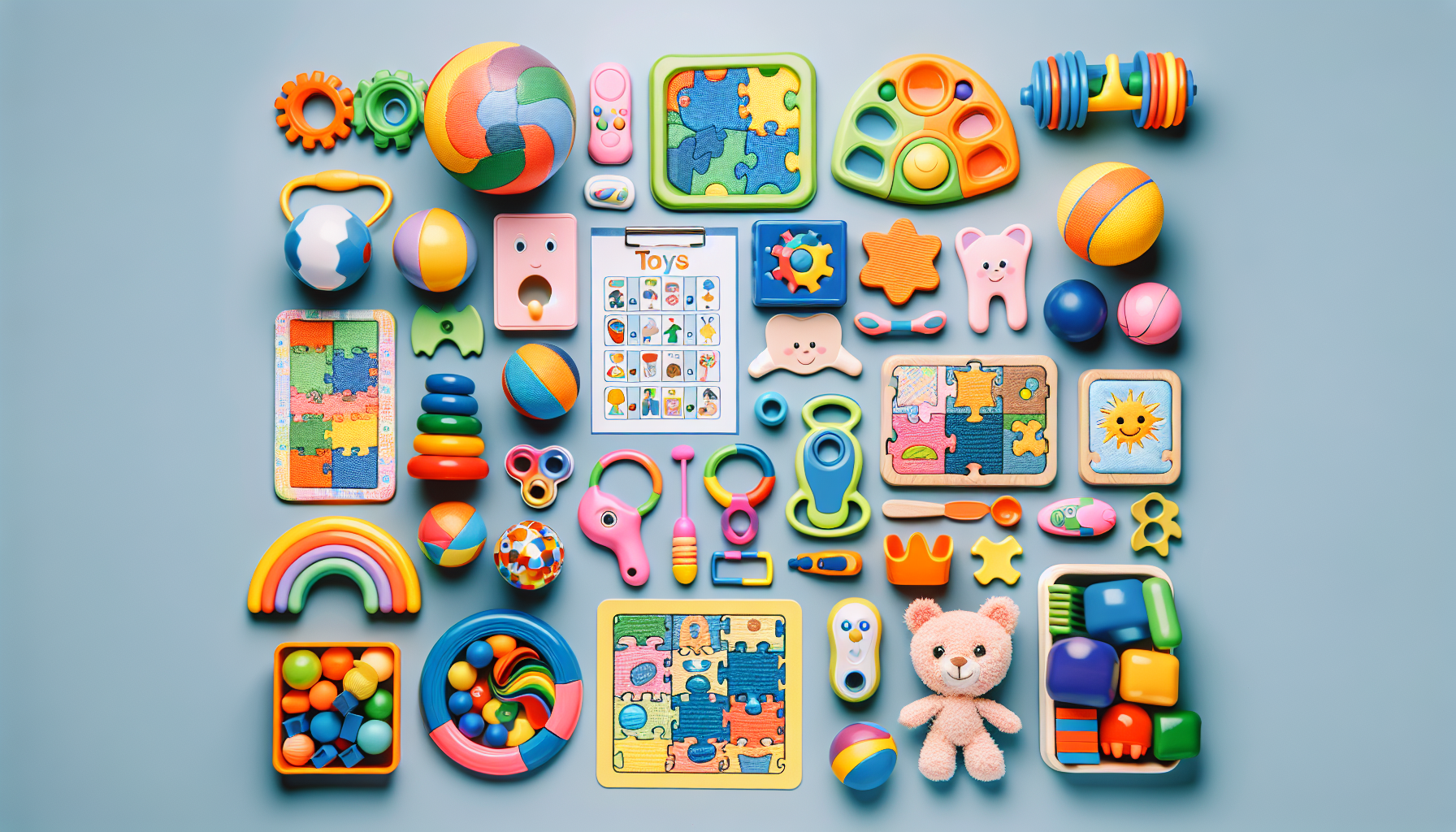Floortime Therapy: A Path To Progress
Embark on a heartwarming journey with Floortime therapy – a profoundly human approach to understanding and connecting with children. Our guide goes beyond therapy techniques; it's an invitation to play, listen, and celebrate the uniqueness of every child.

Understanding Autism and Floortime Therapy
To comprehend the significance of Floortime therapy for individuals with autism, it is essential to first understand what autism is and get an introduction to Floortime therapy.
What is Autism?
Autism, also known as Autism Spectrum Disorder (ASD), is a neurodevelopmental disorder that affects communication, social interaction, and behavior. It is characterized by a wide range of symptoms, including challenges in social interaction, repetitive behaviors, and difficulties with verbal and nonverbal communication.
Autism is a spectrum disorder, which means that individuals with autism can experience a variety of symptoms at different levels of severity. Some individuals with autism may have exceptional abilities in certain areas, such as music, art, or mathematics, while others may face significant challenges in daily functioning.

Introduction to Floortime Therapy
Floortime therapy, developed by Dr. Stanley Greenspan, is a relationship-based intervention approach specifically designed for children with autism. It focuses on building emotional connections, enhancing communication skills, and promoting overall development.
The fundamental principle of Floortime therapy is to meet the child at their current developmental level and engage with them in their preferred activities. This therapy is typically conducted on the floor, where the therapist or caregiver joins the child in their world of play and interaction.
By entering the child's world and following their lead, Floortime therapy aims to strengthen the caregiver-child relationship, improve communication, and foster emotional growth. Through interactive play, the child is encouraged to explore, problem-solve, and develop social and cognitive skills in a natural and supportive environment.
Floortime therapy recognizes the importance of individual differences and tailors the intervention to meet the unique needs of each child. It promotes the child's strengths, interests, and developmental progress, while also addressing areas of challenge.
Understanding the principles and benefits of Floortime therapy is crucial for caregivers and individuals with autism who are seeking effective interventions to support development and enhance quality of life.
The Principles of Floortime Therapy
Floortime therapy is a comprehensive approach to supporting individuals with autism in their social, emotional, and cognitive development. It is based on the principles of a relationship-based approach and involves structured floortime sessions. Let's explore these principles in more detail.
Relationship-based Approach
At the core of floortime therapy is a relationship-based approach. This means that the therapist or caregiver actively engages with the individual with autism, creating a safe and nurturing environment for them to explore, learn, and grow. The primary focus is on building a strong emotional connection and fostering a sense of trust and security.
Through this approach, the therapist or caregiver follows the child's lead, joining in their play and interests. By meeting the child at their level and engaging in activities that capture their attention, the relationship between the child and therapist/caregiver strengthens. This relationship serves as a foundation for further learning, communication, and social interactions.
Floortime Sessions
Floortime sessions are structured interactions that take place on the floor, at the child's level. During these sessions, the therapist or caregiver actively engages with the child, following their lead and joining in their play. The sessions are child-centered, meaning that the child's interests and preferences guide the activities.
The goal of floortime sessions is to encourage the child's communication, social interactions, and problem-solving skills. The therapist or caregiver uses various techniques and activities to facilitate these goals. For example, they may use open-ended questions, gestures, or facial expressions to encourage the child to express themselves and engage with others.
Floortime sessions are not only limited to therapy settings. Caregivers are encouraged to incorporate floortime principles into everyday activities at home, such as mealtime, playtime, and bedtime routines. This helps to create a supportive and enriching environment that promotes the child's social and emotional development.
By embracing the relationship-based approach and engaging in structured floortime sessions, individuals with autism can make significant progress in their communication, social skills, and overall development.
Floortime therapy is often used in conjunction with other complementary approaches, such as speech therapy, occupational therapy, and applied behavior analysis (ABA). These approaches work together to provide a comprehensive and individualized treatment plan for individuals with autism.
Goals and Benefits of Floortime Therapy
Floortime therapy, a play-based intervention for individuals with autism, aims to achieve various goals and provide numerous benefits. By understanding these goals and benefits, individuals with autism and their caregivers can gain a better understanding of the potential outcomes of engaging in floortime therapy.
Enhancing Communication and Interaction
One of the primary goals of floortime therapy is to enhance communication and interaction skills in individuals with autism. Through interactive play and engaging activities, therapists encourage children to express themselves, initiate social interactions, and improve their ability to understand and respond to verbal and nonverbal communication cues.
Floortime therapy focuses on meeting the child at their current developmental level and building upon their strengths and interests. Therapists employ a child-centered approach, following the child's lead and incorporating their preferences into the therapy sessions. This helps foster a sense of engagement, motivation, and connection, which can lead to improved communication skills over time.
Promoting Emotional and Cognitive Development
Another important goal of floortime therapy is to promote emotional and cognitive development in individuals with autism. Through the interactive play and emotional engagement inherent in floortime sessions, therapists work on building emotional connections, fostering empathy, and increasing emotional regulation skills.
Floortime therapy recognizes that emotional development is a crucial foundation for cognitive growth. By focusing on the emotional experiences of the child, therapists can help individuals with autism develop problem-solving skills, enhance their ability to think flexibly, and improve their overall cognitive functioning.
Research has shown that engaging in floortime therapy can lead to several benefits for individuals with autism, including improved social skills, increased self-awareness, enhanced emotional regulation, and better problem-solving abilities. By actively participating in floortime sessions, individuals with autism can experience growth and progress in various aspects of their development.
While floortime therapy can be highly beneficial, finding a qualified therapist and creating a supportive environment at home are essential components of successful implementation.
By understanding the goals and benefits of floortime therapy, individuals with autism and their caregivers can make informed decisions about incorporating this intervention into their treatment plans, leading to improved communication, emotional development, and overall well-being.
Implementing Floortime Therapy
To effectively implement Floortime therapy for individuals with autism, it is essential to find a qualified therapist and create a supportive environment at home.
Finding a Qualified Therapist
When seeking a Floortime therapist for your child, it is important to find someone who is experienced and knowledgeable in this therapeutic approach. Here are a few steps to help you find a qualified therapist:
- Research: Start by researching available therapists in your area who specialize in Floortime therapy. Look for therapists who have the appropriate qualifications and experience working with individuals on the autism spectrum.
- Credentials and Certification: Check if the therapist holds relevant credentials and certifications specific to Floortime therapy. Certification ensures that the therapist has received proper training and has demonstrated proficiency in this therapeutic approach.
- Referrals and Recommendations: Seek referrals and recommendations from other parents, autism support groups, or professionals in the field. They may be able to provide insights and personal experiences with therapists they have worked with.
- Initial Consultation: Schedule an initial consultation with the therapist to discuss your child's needs, goals, and any concerns you may have. This will give you an opportunity to assess their approach, expertise, and compatibility with your child and family.
Remember that finding the right therapist may take time and it is crucial to find someone who aligns with your child's specific needs and your family's values.
Creating a Supportive Environment at Home
In addition to therapy sessions, creating a supportive environment at home is an integral part of the Floortime therapy process. Here are some key considerations:
- Structured Routine: Establish a consistent and predictable routine at home. This can help provide a sense of security and stability for individuals with autism, allowing them to feel more comfortable and engaged during Floortime sessions.
- Designated Play Area: Set up a designated play area at home where you and your child can engage in Floortime activities. This space should be free from distractions and provide a safe and comfortable environment for exploration and interaction.
- Clear Communication: Use clear and simple language when communicating with your child. Be patient and allow them time to process information and respond. Practice active listening and encourage their communication efforts to promote engagement and connection.
- Consistent Parental Involvement: Actively participate in Floortime sessions with your child. Follow their lead, join in their play, and show genuine interest in their activities. This parental involvement fosters a strong emotional connection and helps in building a trusting relationship.
- Explore Resources: Educate yourself about Floortime therapy techniques and activities that you can incorporate into your daily interactions.
By finding a qualified therapist and creating a supportive environment at home, you can maximize the benefits of Floortime therapy for individuals with autism. Remember that each child is unique, and the therapy should be tailored to their specific strengths, challenges, and interests.
Activities and Techniques in Floortime Therapy
Floortime therapy, also known as DIR/Floortime (Developmental, Individual Differences, Relationship-based), utilizes various activities and techniques to engage children with autism and promote their social-emotional development. Here are some key activities and techniques commonly used in Floortime therapy:
Follow the Child's Lead
In Floortime therapy, following the child's lead is a fundamental principle. This involves observing the child's interests and joining them in their preferred activities. By entering the child's world and engaging in activities that they enjoy, therapists and caregivers can establish a connection and build trust.
This approach allows the child to feel valued and encourages them to take an active role in their therapy. By following the child's lead, therapists can gain insight into their unique strengths and challenges, which helps inform the therapy process.
Building Emotional Connections
An essential aspect of Floortime therapy is establishing and nurturing emotional connections with the child. This involves creating a safe and supportive environment where the child feels comfortable expressing their emotions.
Therapists and caregivers use strategies like mirroring, reflecting, and attunement to understand and respond to the child's emotional cues. By tuning into the child's emotions, therapists can help them regulate their emotions, develop empathy, and improve their social interactions.
Encouraging Play and Imagination
Play is a powerful tool in Floortime therapy as it allows children to explore their creativity, practice social skills, and develop problem-solving abilities. Therapists and caregivers engage in play activities that capture the child's interest and encourage interaction.
They might use toys, games, or pretend play scenarios to facilitate communication and social engagement. By encouraging play and imagination, therapists can help children with autism develop social skills, expand their communication abilities, and enhance their cognitive development.
Floortime therapy is highly individualized, and activities and techniques may vary depending on the child's specific needs and interests. Qualified therapists tailor the therapy sessions to meet the unique requirements of each child, considering their developmental level, strengths, and challenges.
Floortime therapy can be implemented alongside other complementary approaches such as speech therapy, occupational therapy, and Applied Behavior Analysis (ABA). These integrated approaches work together to provide a holistic intervention for individuals with autism, addressing various aspects of their development.
Complementary Approaches to Floortime Therapy
In addition to Floortime therapy, there are several complementary approaches that can further support individuals with autism. These approaches work in conjunction with Floortime therapy to address specific areas of development and promote overall progress. Some of the most common complementary approaches include speech therapy, occupational therapy, and Applied Behavior Analysis (ABA).
Speech Therapy
Speech therapy is a valuable complementary approach to Floortime therapy for individuals with autism who may experience challenges with communication and language skills. Speech therapists, also known as speech-language pathologists, work with individuals to improve speech articulation, language comprehension, and expressive communication.
Through various techniques and exercises, speech therapy aims to enhance communication abilities, including verbal and non-verbal communication. The therapist may incorporate activities such as picture cards, social stories, and role-playing to facilitate language development and social interaction.
Speech therapy can help individuals with autism communicate more effectively, express their needs and wants, and develop crucial social skills. It can also assist in addressing specific speech-related challenges, such as stuttering or apraxia.
Occupational Therapy
Occupational therapy is another valuable complementary approach to Floortime therapy for individuals with autism. Occupational therapists work with individuals to improve their ability to perform daily activities and develop skills necessary for independent living.
In the context of autism, occupational therapy focuses on enhancing sensory processing, fine motor skills, self-care skills, and overall adaptive behavior. The therapist may incorporate activities such as sensory integration exercises, handwriting practice, and self-help routines to promote independence and functional abilities.
Occupational therapy can help individuals with autism develop skills needed for school, work, and daily life. It can address challenges related to sensory sensitivities, motor coordination, and self-regulation.
Applied Behavior Analysis (ABA)
Applied Behavior Analysis, commonly known as ABA, is a widely recognized and evidence-based approach for individuals with autism. ABA focuses on analyzing and modifying behavior by applying principles of learning theory. ABA interventions are tailored to the individual's needs and can be implemented in various settings, such as home, school, or therapy centers.
ABA therapy aims to increase desired behaviors and reduce challenging behaviors by breaking down skills into smaller steps and providing positive reinforcement. The therapist collects data to track progress and adjust interventions accordingly.
ABA therapy can address a wide range of skills, including social interaction, communication, academic abilities, self-help skills, and more. It can be highly effective in promoting positive behavior changes and improving overall functioning.
Complementary approaches such as speech therapy, occupational therapy, and ABA can be valuable additions to Floortime therapy, offering additional support and addressing specific areas of need for individuals with autism. By combining these approaches, caregivers and professionals can create a comprehensive and individualized treatment plan to best support individuals on their path to progress.
Summary
As we conclude our exploration into the world of Floortime therapy, let's take a moment to appreciate the deeply human connection that lies at its core. This approach is not merely a therapeutic technique; it's a shared journey of understanding, connection, and growth between caregivers and children. Floortime therapy invites us to enter the child's world, to play, to listen, and to celebrate the unique qualities that make each child extraordinary.
In the realm of Floortime, every interaction is an opportunity to build bridges, to nurture emotional bonds, and to unlock the full potential of each child. It's about recognizing that true progress is measured not just in milestones but in the richness of the connections we cultivate.
So, as we embrace the principles of Floortime therapy, let's carry forward the spirit of curiosity, patience, and empathy. It's a reminder that, in the dance of development, the most meaningful steps are taken hand in hand. Here's to fostering a world where every child's unique story is not just heard but celebrated, and where the language of play becomes a powerful tool for connection and understanding.
Sources
Find More Articles
Contact us
North Carolina, Tennessee, Nevada, New Jersey, Utah, Virginia
New Hampshire, Maine
Massachusetts, Indiana, Arizona, Georgia
.avif)



.jpeg)












































.jpeg)









.jpeg)
.jpeg)



.jpeg)
















.jpeg)
.jpeg)



.jpeg)
.jpeg)











.jpeg)


